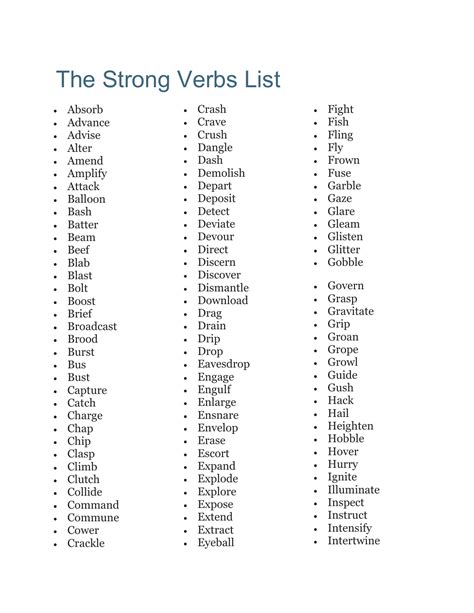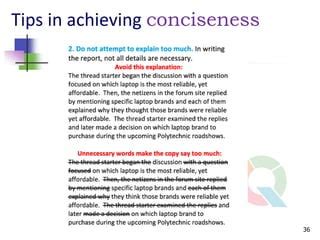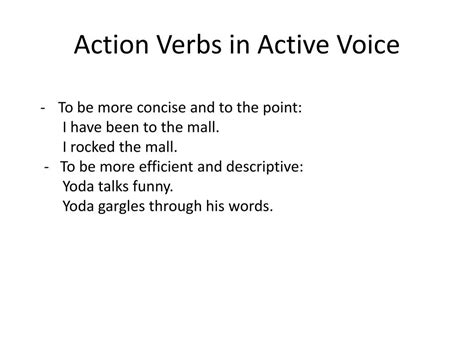In the realm of effective communication, clarity is king. Yet, many writers inadvertently obscure their message with unnecessary words, convoluted phrasing, and weak constructions. This ‘wordiness’ not only frustrates readers but also dilutes the impact of your ideas. Fortunately, two powerful tools stand ready to help you trim the fat from your prose and inject it with vitality: active voice and strong verbs.
Understanding Wordiness and Its Impact
Wordiness is the use of more words than necessary to convey a meaning. It’s the linguistic equivalent of a cluttered room – important items get lost amidst the junk. Common culprits include:
- Redundant phrases (e.g., “future plans” instead of “plans”)
- Overuse of prepositional phrases
- Weak verbs paired with adverbs (e.g., “walked quickly” instead of “raced”)
- Nominalizations (turning verbs into nouns, e.g., “make a decision” instead of “decide”)
- Passive voice constructions
The consequences? Your writing becomes harder to read, less engaging, and potentially less persuasive. Readers may skim, lose interest, or misunderstand your core message.

The Power of Active Voice
Active voice makes your sentences direct, dynamic, and clear. In an active sentence, the subject performs the action. In contrast, passive voice often obscures who or what is performing the action, leading to longer, less direct sentences.
What is Active Voice?
In active voice, the subject acts upon the verb. For example: “The dog chased the ball.” Here, ‘dog’ (subject) performs the action ‘chased’ (verb).
Transforming Passive to Active
Many writers fall into the trap of passive voice, often unconsciously. Here’s how to identify and transform it:
- Passive: The report was written by Sarah. (longer, less direct)
- Active: Sarah wrote the report. (concise, clear, focuses on the doer)
- Passive: Mistakes were made. (avoids responsibility)
- Active: I/We made mistakes. (clear accountability)
By consistently favoring active voice, you imbue your writing with energy and make it easier for readers to follow the flow of information.

Unleashing Strong Verbs
Verbs are the engine of your sentences. Weak verbs, often coupled with adverbs or turned into nouns, slow down your writing and make it feel sluggish. Strong verbs, on the other hand, convey meaning efficiently and vividly.
Beyond Weak Verbs and Adverbs
Avoid verbs like ‘to be’ (is, am, are, was, were) or vague verbs (make, get, go, come, do) when a more specific verb can do the job. Often, adverbs are a sign that your verb isn’t strong enough.
- Weak: She walked quickly down the hall.
- Strong: She scurried down the hall. (or dashed, sprinted, raced)
- Weak: He made an announcement.
- Strong: He announced.
Choosing the Right Verb
A strong verb doesn’t just describe an action; it embodies it. When revising, look for opportunities to replace generic verbs and their adverbial crutches with single, powerful verbs that paint a clearer picture.
For example, instead of saying something is “very big,” choose “enormous,” “massive,” or “colossal.” Instead of “went quickly,” use “bolted,” “rushed,” or “sped.” This precise word choice not only reduces word count but also elevates your prose.

Additional Strategies for Conciseness
While active voice and strong verbs are paramount, other techniques can further refine your writing.
Eliminating Redundancy
Be vigilant about tautologies and redundant phrases. Common examples include “absolutely essential,” “brief summary,” “personal opinion,” and “end result.” Most of the time, one word suffices.
Avoiding Nominalizations
Nominalizations turn verbs or adjectives into nouns, often requiring extra words. For instance, instead of “the implementation of the plan,” write “implementing the plan” or “the plan’s implementation.” Instead of “give consideration to,” simply use “consider.”
Cutting Prepositional Phrases
While necessary, an excessive string of “of,” “in,” “on,” “for,” etc., can weigh down sentences. Look for ways to rephrase or use possessives to shorten these phrases. For example, “the decision of the committee” can become “the committee’s decision.”

Cultivating a Concise Writing Habit
Combating wordiness is an ongoing process that improves with practice. The key is to approach your writing with a critical eye, always asking: Can I say this more simply? Is every word earning its keep?
Regularly reviewing your drafts specifically for passive voice, weak verbs, and unnecessary words will train your ear and eye to identify and correct these issues. Over time, conciseness will become a natural part of your writing style.
By embracing active voice and choosing strong, precise verbs, you will not only eliminate wordiness but also transform your writing into clear, compelling, and impactful communication. Your readers will thank you for it.





